In this article, we delve into the fascinating world of acoustics to answer a question that has piqued the curiosity of many: do gunshots echo?
From the vast expanses of mountain ranges to the concrete jungles of cities, we’ll examine the various factors that influence the echo of a gunshot and unravel the science behind the propagation of sound waves in different environments.
So, let’s embark on this auditory adventure and uncover the truth about echoing gunshots.
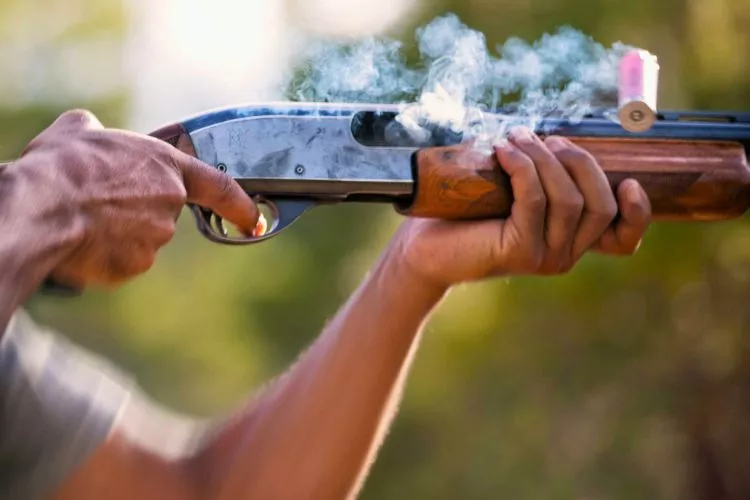
Do gunshots echo? (The Truth)
Yes, gunshots can indeed echo. However, several factors influence the echo’s presence and audibility.
An echo is a reflection of sound that arrives at the listener’s ears so late that it’s perceived as a distinct sound. For echoes to be heard, there needs to be a delay of about 1/16th of a second between the original and reflected sounds.
Here’s a more detailed examination:
- Surroundings: For a gunshot to echo, it needs a large, hard surface to reflect off. These could be structures like buildings in an urban environment, or natural features like mountains or wooded areas in a rural setting. In open fields with no obstructions to reflect the sound, an echo will unlikely be heard.
- Distance: Distance plays an integral part in the audibility of an echo. The further you are from reflective surfaces (e.g., buildings or mountains), the longer it takes for the sound to bounce back, and the more likely you will hear the echo.
- Weather Conditions: Surprisingly, weather conditions can affect how sound waves travel. Factors such as air temperature, wind direction, and humidity may alter the audibility of a gunshot’s echo.
- Original Sound Intensity: The loudness of the original sound is crucial. The gunshot must be loud enough that its echo- reflected and usually quieter- can still be heard.
In conclusion, while gunshots certainly have the potential to echo, whether or not one perceives the echo depends on a multitude of factors, chiefly the size and proximity of surrounding structures, the gunshot’s intensity, and the observing listener’s distance from the source of the gunshot as well as the reflecting surfaces.
Gunshots and Echoes: Real-Life Examples
In this section, we will explore various real-life settings where echoes from gunshots may be observed, using specific examples.
Let’s examine the role of different environments in generating the phenomenon of echoes from gunshots.
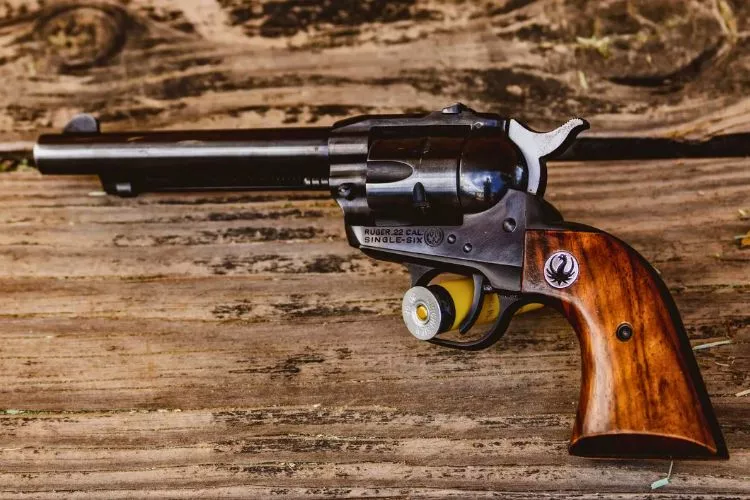
Urban environments and high-rise buildings
Urban environments with high-rise buildings offer excellent conditions for gunshots to echo. When a gunshot is fired in an urban area, its sound waves can bounce off multiple structures such as buildings, walls, and other hard surfaces.
As cities are often densely packed with such structures, multiple echoes, or even reverberations, can occur.
In some cases, buildings nearby can create a “canyon effect,” where the sound waves continuously bounce back and forth, amplifying the echo. The structures’ density and arrangement determine the echoes’ audibility in these scenarios.
Open fields and mountainous regions
In open fields, the chances of hearing an echo from a gunshot are significantly lower due to the absence of structures off which the sound can reflect. However, introducing other geographical features such as mountains or hills increases the likelihood of hearing echoes.
Mountainous regions can create long, distinct echoes as the sound waves travel greater distances before reflecting off the mountain faces. The time delay caused by this longer journey can make the echo more audible.
On the other hand, valleys or narrow canyons can offer unique echo characteristics due to the multiple reflections that may occur between opposing slopes.
Indoor shooting ranges and enclosed spaces
Indoor shooting ranges and other enclosed spaces often exhibit distinctive gunshot echoes. In these environments, echoes may consist of multiple reflections from the walls, ceiling, and floor, creating a reverberant sound that rapidly decays over time.
The intensity and duration of these echoes depend on the size of the room, materials used in the construction, and the acoustic treatment of the space.
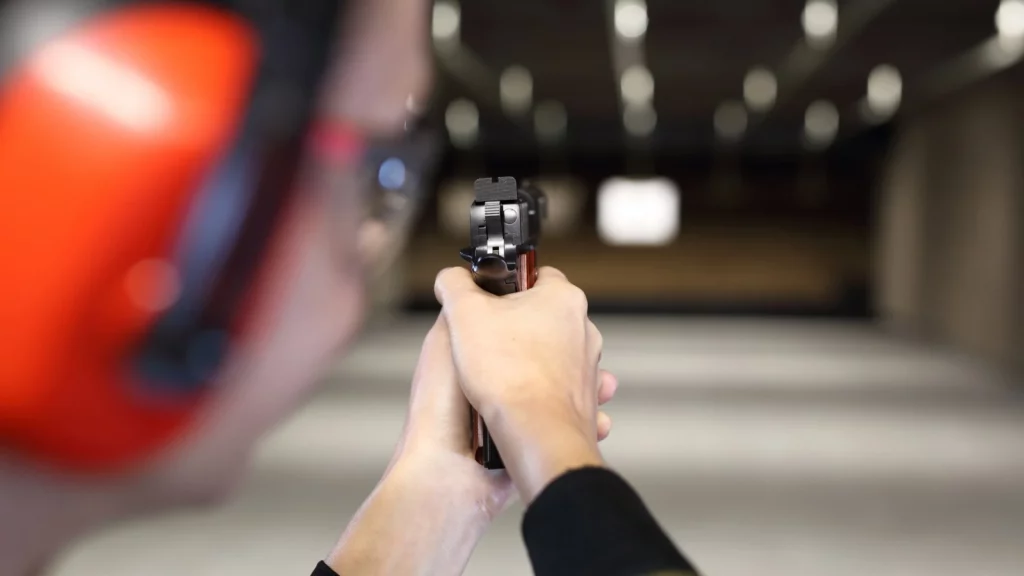
Shooting ranges typically utilize acoustical materials designed to dampen or absorb reflections, reducing the severity of echoes to protect occupants from loud and sudden noises. Such treatments can also prevent secondary echoes that could otherwise disturb or interfere with other shooters.
In summary, real-life examples demonstrate that gunshots can echo in various scenarios. Urban environments with high-rise buildings, mountainous regions, and indoor shooting ranges all exhibit different characteristics of echoes.
The unique properties of each setting allows for a diverse range of gunshot echo experiences, each shaped by the interplay of factors such as distance, surroundings, and material composition.
Myth or Reality: Debunking Common Beliefs
Misconceptions can muddy our understanding of the complex natural world. This is no exception in the field of acoustics, particularly those related to gunshot echoes.
Here, we unpack some common beliefs to reveal the reality behind the phenomenon.
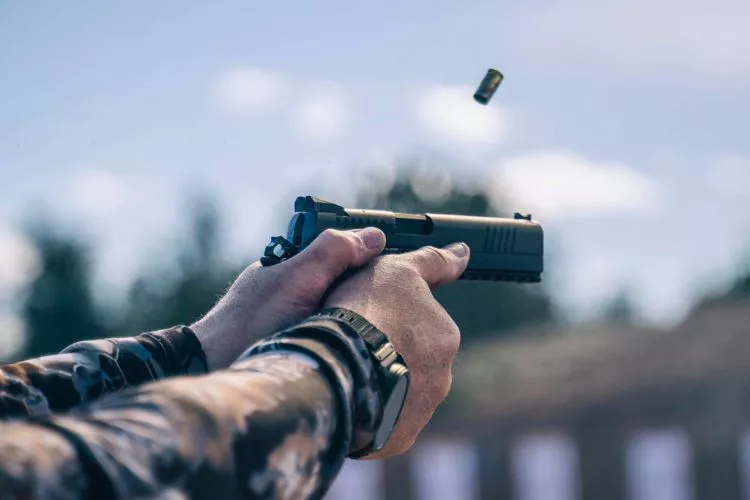
Myth: Gunshots always produce distinct echoes
It’s a common belief that the roar of a gunshot will, without fail, produce a distinct echo. This theory is likely supported by the portrayal of gunshots in popular media, where echoing gunshots add drama and tension to a scene.
However, reality paints a different picture.
Reality: Gunshots may not always generate noticeable echoes
Facts dictate that gunshots do not always produce distinct echoes that can be heard. While a gunshot’s loud intensity and sharp onset give it a high probability of creating an echo, certain conditions must be present for an echo to be perceptible.
Whether or not we hear an echo depends on several factors, including the environment, distance from the sound source, atmospheric conditions, and the listener’s hearing ability.
Explanation: Factors that can reduce or eliminate echoes from gunshots.
Numerous factors can reduce or even eliminate gunmen’s perceived echoes.
- Absence of Reflective Surfaces: Echoes occur when sound waves bounce off a large, hard surface and return to the listener. In environments with few or no reflective surfaces (e.g., an open beach), sound waves from a gunshot may simply dissipate into the air, causing no noticeable echo.
- Proximity to the Sound Source: If the listener is too close to the gunshot’s source, the time interval between the gunshot and its echo may be too short, blending the original and its echo into a single perceived sound.
- Insufficient Sound Intensity: While gunshots are typically loud, the echo is often significantly quieter due to energy loss during sound wave transmission. If the original gunshot is not sufficiently loud, its echo may be too quiet to perceive.
- Atmospheric Conditions: The speed of sound can be influenced by factors such as temperature, humidity, and wind direction. These variations can distort or muffle a gunshot’s echo, making it less perceptible to a listener.
Understanding Sound Reflection and Reverberation
Sound’s behavior in different environments can be a captivating exploration into the realm of acoustics.
This section will distinguish between two phenomena associated with sound reflection—echoes and reverberation— and explore how gunshots contribute to reverberation.
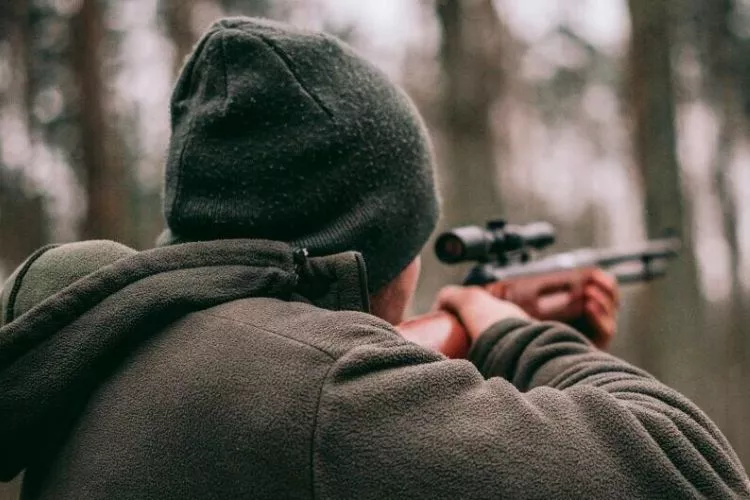
Differentiating echoes from reverberation
Both echoes and reverberations are products of sound reflections. However, the reflected sound’s timing and nature differentiate the two.
An echo is perceived when the reflected sound reaches the listener with a delay, enabling them to distinguish it from the original sound.
For an echo to be heard, there typically needs to be a delay of about 1/16th of a second between the original and reflected sounds.
On the contrary, reverberation is experienced when many reflections arrive at the listener so quickly that they cannot distinguish between them. Instead of hearing separate distinct sounds, they hear a prolongation of the original sound.
Reverberation commonly occurs in enclosed spaces, where sound has many surfaces to reflect off and little air to dissipate.
How gunshots contribute to reverberation in certain environments?
When a gunshot, characterized by its short, high-energy burst of sound, is fired in certain environments, it often results in a reverberation.
This is particularly true in enclosed or semi-enclosed spaces like buildings, tunnels, or even urban environments with closely-spaced structures.
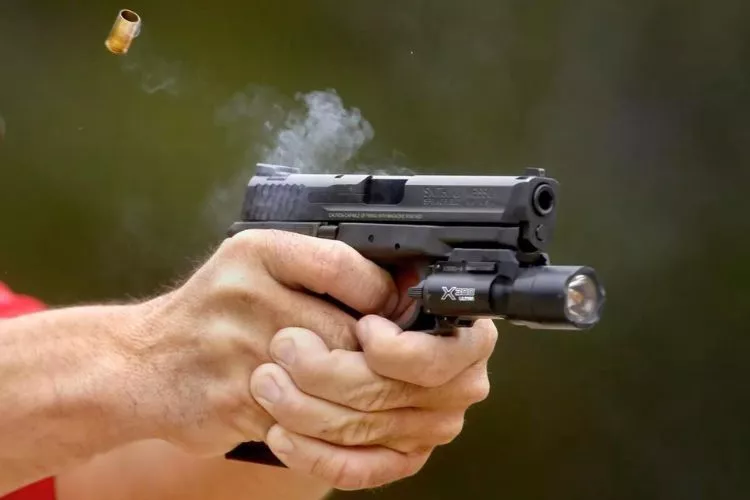
Upon firing, the gunshot’s sound waves propagate in all directions. These waves bounce off multiple surfaces, reflecting and scattering. Each reflection results in a smaller burst of sound that the listener perceives almost contemporaneously. The quick succession of these reflections creates a ‘prolongation’ effect, known as reverberation.
More importantly, the loud and abrupt nature of the gunshot intensifies the reverberation effect. As the intensity of the original sound is high, even after multiple reflections and consequent energy losses, the reverberated sound can still be quite audible and significant.
In summary, reflections and reverberations are fascinating aspects of how sound interacts with the surrounding environment. Due to their high energy and intensity, gunshots can particularly contribute to robust reverberation effects in specific environments, manifesting in a complex auditory experience.
How To Tell The Difference Between Gunshots And Fireworks?
Telling the difference between the sounds of gunshots and fireworks can be challenging, especially considering the variability between firearms and fireworks. That said, here is a guide which can aid in distinguishing between the two.
- Characteristics of Gunshot Sounds: Gunshots have some distinctive characteristics which differentiate them from the sound of fireworks. Below are a few of these attributes:
- Sudden, Sharp Sound: Gunshots often produce a sudden, sharp crack or bang, which can be followed by a brief echo when fired outdoors in an urban area. In contrast to this, the sound of fireworks tends to last longer.
- Rapid Succession: In cases where multiple gunshots are fired, they often occur in rapid succession. The time lapse between shots is controlled by how quickly the shooter can pull the trigger, usually resulting in a more regular rhythm than fireworks.
- Absence of Sizzle: Gunshots don’t produce the sizzle or whistling sound that precedes or follows fireworks. While gunshots will simply produce a crack or bang, fireworks often make various noises, such as a launching sound before the explosion and a lingering crackling or faint boom afterwards.
- Characteristics of Fireworks Sounds: Fireworks have unique qualities in their sound that can help distinguish them from gunshots. Here are a few key parameters:
- Fading Trail of Sound: Fireworks will often launch with a faint sound intensifying as it takes flight. A whistling or sizzling sound sometimes follows this before the explosion. This sequence of sounds isn’t present in gunshot noises.
- Variety in Sound: Fireworks come in various types and each makes a different sound. Some crackle, some make a booming sound, while others whistle. These diverse sounds can assist in identifying fireworks.
- Visual Cues: Fireworks are designed for visual spectacle. Bright lights, vivid colors and sparks’ trails can clearly indicate their use. Unless fired in the dark, gunshots do not usually produce a similar light show.
- Gunshot Detection Systems: In certain urban areas, law enforcement may use gunshot detection systems (like ShotSpotter) that can detect and differentiate the sound of gunshots from other noises. These systems use a network of microphones installed around the city that triangulate the source of sounds similar to gunshots.
While distinguishing between fireworks and gunshots can be complicated due to their seemingly similar loud, percussive sounds, paying attention to certain auditory and visual cues can help differentiate them.
The examination above could serve as a helpful guide the next time you’re undecided about whether you’ve heard a gunshot or a firework. Learning to identify the different sounds can prove to be a useful skill, particularly in urban environments.
Conclusion:
In exploring echoes originating from gunshots, we’ve learned that these loud, sharp sounds don’t always result in distinct echoes.
Multiple factors come into play that can strengthen, minimize, or outright eliminate the echo of a gunshot, including the environment, the presence of reflective surfaces, weather conditions, and one’s proximity to the source of the gunshot.
While an echo can certainly be produced—if the right conditions are present—there’s no guarantee it’ll be perceptible. Hence, the assertion that gunshots always echo is rooted more in myth than reality.
By debunking such misperceptions and enhancing our understanding of how sound behaves in our environment, we become more informed observers and interpreters of the world around us.
Sound is a complex phenomenon, and gunshots provide interesting, real-world examples of how it can interact with our surroundings. This intricate interplay of variables gives us a richer appreciation of the auditory experiences that enhance our lives.


